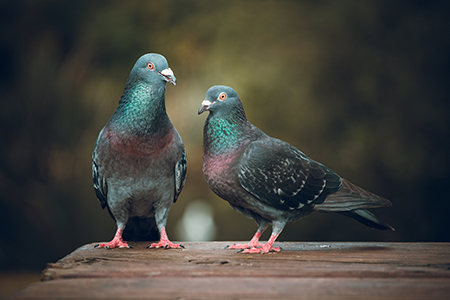 Animals and Culture
Animals and Culture  No Comments
No Comments A “Pest” by Any Other Name…
Animals like rodents, ants, or mosquitoes are viewed as pests – at least if they’re in the wrong place at the wrong time. They get into our food, climb all over our counters, suck our blood, provide the occasional scare, and sometimes even spread nasty diseases. But this “pest” label evolves and changes over time, and is, frankly, more of a reflection of ourselves than the animals.
For example, it took a mere century for pigeons to go from adored avian friends – couriers, pets, providers of fertilizer and meat – to the current “rats with wings” status they hold with many people. And if you think the pigeon’s status in 1900 was lofty compared to today, it was still a far cry from the distant past, when some people viewed them as holy! What happened? Not much: all it took was for them to be rendered obsolete by modern tastes and technologies. Boom. Done. While there are still a few pigeon fanciers around today, in the eyes of many people, these birds are viewed as an overabundant, messy nuisance (albeit kinda cute). Can you believe that one of these winged rats received the Croix de guerre medal for saving the lives of 194 American soldiers in the First World War? How times change!
Another pest vs. prized example is whether we consider a species invasive or in need of protection. In Florida, the Burmese python is considered highly invasive, and regularly hunted down and hacked to bits. Meanwhile, there are people in Vietnam who devote themselves to protecting this snake, where it is not invasive, and its numbers have dropped precipitously in recent years.
But don’t get the idea that choosing to protect or eradicate a species is merely a game of numbers used by wildlife departments to maintain the illusion of “natural balance.” Consider the invasive honey bee, which was introduced to North America in the 17th century. You are far more likely to visit the emergency room – or even die – from a bee attack than you are from a Burmese python. In fact, the only recorded deaths from constrictors in the United States have been from captive snakes. Yet the idea of losing honey bees is utterly tragic and alarming to many of us! This is because honey bees, much like pigeons of old, provide us with a valuable service and are well-liked by many people. Invasive or not, these insects are viewed through the lens of our needs and beliefs. So, at least for now, honey bees are pals, not pests… and unlike numerous other invasive species, we strive to protect them!
Outside/Inbox: ‘What makes an animal a pest?’
Resources
★ Smithsonian National Museum of American History: Cher Ami
★ Are honey bees native to North America?

